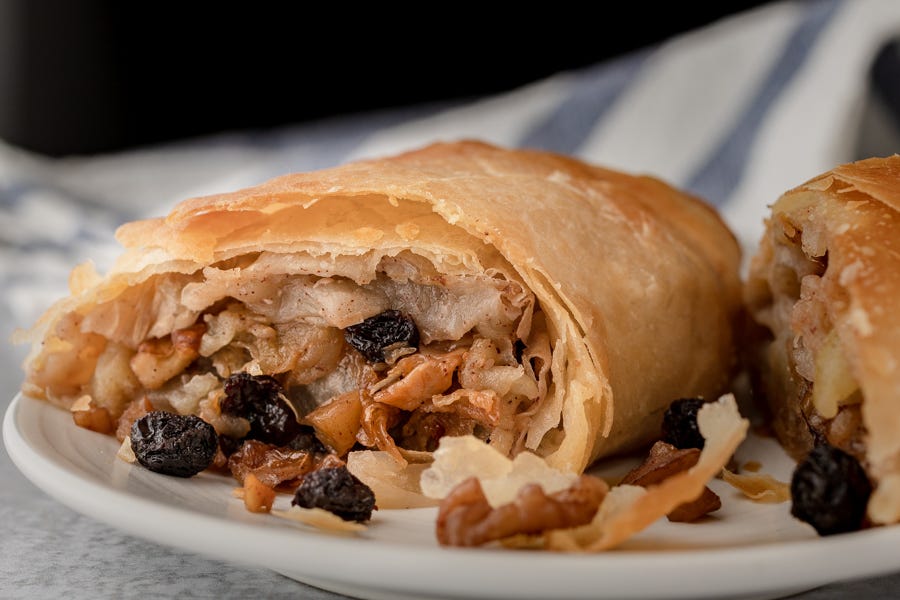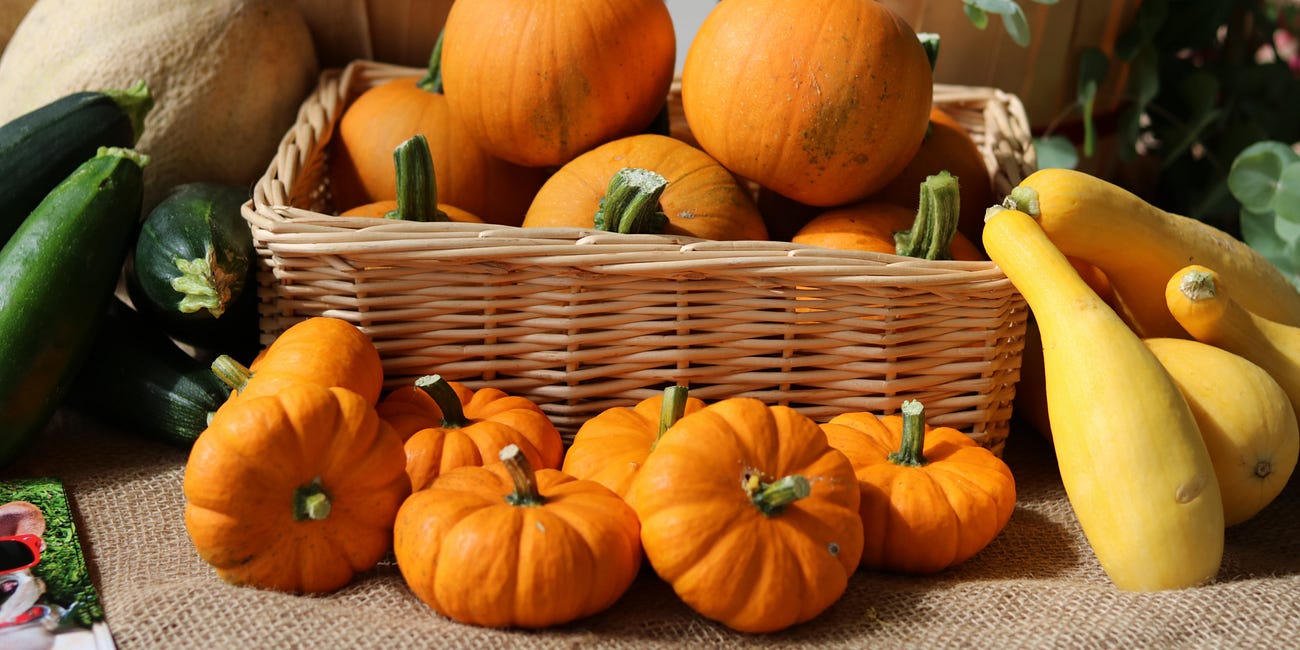THE HERITAGE RECIPE PROJECT: The Art of Apple Strudel
Preserving Tradition One Layer at a Time
This article is part of The Heritage Recipe Project series, where we celebrate culinary heritage, the art of the shared recipe, and create a feast for the eyes as well as the palate.
There is an art to making a strudel. It involves the patience of a saint, the skilled hands of a surgeon, and the deep, unconditional love of a mother or grandmother. In our fast-paced-“I-want-it-now-daddy” culture, this is a recipe that has faded from Sunday Suppers and family get togethers. Though, remembered fondly with phrases like, “it was one of my favorite dishes that my grandma would make,” or “I remember my mom making this for Sunday Supper. It was the best part of the meal,” those phrases are quickly followed by, “who has time to make strudel today.”

The Challenge of Keeping Heritage Alive
That disclaimer always makes my heart sink a little. It’s this concept of something taking too much time away from…what, scrolling through social media, watching the latest episode of New Jersey Housewives…that condemns heritage recipes to surviving only as nostalgic recollections.
Okay, I'll admit that when I interviewed my birthmother about a heritage recipe that defined her cultural upbringing, and she said, "well, it has to be apple strudel," my anxiety levels shot up a bit. Since I always prepare the recipes that my contributors share, I knew I was going to have to make apple strudel. I'll also confess that the idea of simply buying some phyllo dough did cross my mind. The readers might never find out that I took a shortcut. But, of course, that’s not the spirit of this project.
Prepping for the Strudel Challenge
I read through the recipe my birthmother sent to me, my Granny’s recipe, several times and went through the interview transcript to make sure that I was mentally prepared to what lay ahead. There were a couple of things that struck me. The first was that Carol, my birthmother, said that they made this recipe at least once a month. And the second was the way that you have to prepare the dough for stretching.
“The one thing with the dough,” she stated matter of factly. “You're supposed to hold it way above the boards and crash it down. It's really good for frustration.” After crashing the dough on the board 100 to 125 times according to Carol, “you start to feel pretty good.”
After making the dough, I set about getting the table ready. Though I don’t have a large oak, clawfoot table like Granny’s, I did find an appropriate cloth to spread across my make shift strudel-table. I followed the instruction of “crashing” the dough onto a floored surface 125 times - I went with the higher number just to be on the safe side - and she was right, I felt no frustration. My arms were a little tired, though.
I moved the dough to the table, rolled it out, spread some oil over the surface, and then set about stretching it with the back of my hands. It was at this point that I imagined my Granny on the other side of the table guiding me in the proper way of gently sliding my hands under the dough to insure that I didn’t make any holes. As I “listened” the dough started to fall over the edges of the table and before long, I’m very proud to say, I could have read a newspaper through it. AND no holes.
The Value of Tradition and Connection
After filling, rolling, arranging on the baking sheet, and skillfully ushered this soon-to-be flaky pastry to the oven, I sank into a kitchen chair and thought about the experience of making this takes-too-much-time-dish.
Yes, it did require some time. Yes, it did require an extreme amount of patience. And, yes, it did require some skill. But it also created a connection to a heritage, my heritage, that I am just learning about. It made me appreciate the labor of love that my granny put into this dish month, after month.
Could I have saved some time with the phyllo dough? Sure, but then I would have missed everything that I learned.
So the next time you think that a heritage recipe is just 'too much work,' I implore you to put the phone down, turn the TV off, and experience all that that recipe has to share with you. Don’t let these flavors fade into the mists of culinary history, for in the preparation lies not only a taste of the past but a connection to the generations before us.
Granny Eisenmann’s Apple Strudel
Serves: (10) • Prep: (2 hours) • Cook Time: (45 minutes)
Carol’s grandfather came from Germany when he was just a boy. Once of his favorite desserts was Apple Strudel and it became her father’s as well. They would make it often, stretching the dough over her grandma’s clawfoot oak dining table. Set aside an afternoon, it is quite a process, but well worth it.
Ingredients
Dough
3 cups sifted enriched flour
1/2 teaspoon salt
1 tablespoon vegetable oil
1 beaten egg
1 cup lukewarm water
Filling
1/2 cup melted butter
1/2 cup fine bread crumbs
1 1/2 pounds tart apples, peeled, cored, and finely sliced (4 - 6 apples)
1/2 - 3/4 cups sugar, depending upon the tartness of the apples
1 teaspoon cinnamon
1 cup raisins
1 cup chopped walnuts or almonds
Instructions
Dough
Sift flour and salt into a large bowl,
Make a well in the center of the flour; place oil and egg in the depression.
Work flour gently into oil and egg and gradually add water to make a soft dough. It will be sticky.
Turn dough out onto a lightly floured work surface. Hold dough high above the surface and crash it down against the surface. Repeat this about 100 to 125 times or until the dough is smooth and elastic and leaves the board clean. (After 15 to 25 times it will no longer stick to the surface.)
Knead slightly and pat it into a round.
Lightly brush the surface of the dough with oil - not olive oil.
Cover the dough with an inverted warmed bowl and allow to rest form 30 to 60 minutes.
To Stretch the Dough
Spread a large table (about 3x5 feet) with a clean cloth, allowing cloth to hand down over the edge of the table. A bed sheet work well for this.
Sprinkle cloth lightly but thoroughly with about 1/2 cup flour.
Place dough in the center of cloth and roll it into a large oblong, turning it several times to prevent it from sticking to the cloth.
Roll the outer edge as thinly as possible.
With a soft brush, lightly brush the dough with cooking oil - not olive oil; the oil aids in preventing the formation of holes during stretching.
Using the backs of your hands, reach under the dough and start stretching (do not pull) from the center to the outer edge.
Work around the table until the evenly stretched dough is as thin as paper and drapes over the edges of the table on all sides.
As you stretch, keep the dough close to the table. The dough should not have any torn spots. If some should appear, do not try to patch them.
With kitchen scissors, trim off the thick outer edges that over hang the table.
Fill and Roll the Dough
Allow the stretched dough to dry a little, about 10 minutes. It should lose its stickiness but avoid drying too long because it becomes brittle.
Brush dough with some of the melted butter. Sprinkle two-thirds of the surface with bread crumbs and apples.
Sprinkle the sugar, cinnamon, raisins, and nuts over the apples.
Starting at the long edge, roll as for a cinnamon roll.
Place on buttered baking sheet. Brush with butter and bake in moderate oven (350˚F) 35 - 45 minutes, basting frequently with melted butter.
Turn the Page…
Do you have a recipe, tradition, or story you think would make a great visual narrative, send me an email at connect@asweeat.com
If you would like to further support this project, there are a couple of ways that you can become a patron subscriber. Choose one of the paid tiers here, purchase something from our Amazon wish list, or buy me a tea - I know it says Buy Me a Coffee, but we’re tea gals.
Let’s Stay Connected
Follow us on Instagram @asweeat,
Join our Family Recipes, Traditions, and Food Lore community on Facebook
Subscribe to the As We Eat Journal
Listen to the As We Eat Podcast
Do you have a great idea 💡 for a show topic, a recipe 🥘 that you want to share, or just say “hi”👋🏻? Send us an email at connect@asweeat.com
Looking for a unique gift idea for a birthday, anniversary, holiday, host or hostess, or just because? Consider giving a subscription to the As We Eat Journal.























